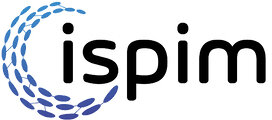Research Publications
BOOKS
The Next Wave (And How To Ride It)
Book forthcoming
Due for release late 2025
Understanding our digital lives and the rate of change is tough. This book helps define the rules to not only embrace change but take Conscious advantage of it.
In this forthcoming release, learn how to un-cluster your digital life and work, then re-engineer it for impact and purpose. Unravelling technology is more complex than ever, but with The Next Wave as your guidebook, you will understand how to move and journey with environmental, social and governance.
The Palgrave Handbook of Methods for Media Policy Research
August 2019
Palgrave Macmillan
Peer reviewed
Chapter 8, Action Research
This handbook aims to provide the first comprehensive overview of Media Policy methods of any kind. Covering qualitative, quantitative, and mixed-method approaches, a team of top Media Policy researchers and practitioners offer an invaluable guide to the field via a structure inclusive of theory, empirical discussion, and case approaches alike. Contributors combine accessibly-written details of methods along with critical reflection on concepts to offer clear, concise introductions to can be read to enrich studies of mass media, internet, social and emerging media, and more.
Creative Work Beyond the Creative Industries
Innovation, Employment and Education
July 2015
Edward Elgar Publishing
Peer reviewed
Chapter4, Digital Creative Services in Education, Mining and Manufacturing: Pursuing Innovation through Interoperability
Policymakers globally are seeing the potential for future growth through embedding greater creativity across their economies. Yet much academic research has focused on the creative industries as traditionally defined, rather than looking at the bigger picture. CCI's research has been the exception, making significant conceptual and empirical breakthroughs in our understanding of creative work in the wider economy. This volume should be required reading for students, researchers and practitioners of innovation policy.
PAPERS
Semantic mapping of cognitively diverse start-up teams: Dynamic creative interoperability
May 2016
International Society for Professional Innovation Management
Peer-reviewed conference proceeding
The XXVII ISPIM Innovation Conference, Porto, Portugal on 19-22 June 2016.
How do small firms in different sectors collaborate to innovate? A possible explanation is that of network structural holes and their bridging (Burt, 1992). Conversely, Stark (2009) argues that solely bridging or brokering does not necessarily lead to the generation of new knowledge, and that successful innovations occur rather via folded diversity, that is, where two firms have some shared membership as well as distinct cognitive diversity. But what happens when cognitively diverse firms without the advantage of overlapping membership nevertheless seek to co-create an innovation to mutual commercial advantage? Using Leximancer we built semantic network maps for three interventions in which small digital creative firms each formed new knowledge with a group from one of three other sectors: education, mining and manufacturing. We argue the semantic enabling of the interventions, acted as both a broker and a “structural fold” enabling social legitimation and a shared language that made innovation possible.
Creative Interoperability: Mapping Knowledge Networks Between Groups.
June 2014
International Society for Professional Innovation Management
Peer-reviewed conference proceeding
XXV ISPIM Innovation Conference 2014, Innovation for Sustainable Economy & Society, Dublin
How do firms from different sectors, with different knowledge bases, combine to innovate? Specifically, how do creative firms co-create with firms from the education, mining and manufacturing sectors? We examine a funded intervention scheme comprising three cases, which each embedded a creative digital media firm in a firm from one of these other sectors (Swan & Hearn 2014a). Collaboration was facilitated within the intervention, and the subsequent knowledge flows were visualised through semantic network analysis software. Though the intervention is an artificial experiment in one sense, each group produced substantial commercial real-world outcomes. This paper seeks to theorise the network-effect results in terms of creative interoperability.
REPORTS
Interactive Skills Integration Scheme: Evaluation Report
Feb 2013
ARC Centre of Excellence for Creative Industries and Innovation
Evaluation Research Report for Department of Education, Skills and Employment (DEEWR)
The Australian Games Industry is facing significant pressures to remain relevant, both locally and overseas. In recent years, the industry has experienced the closure of many major local development houses and the ‘letting-go’ of hundreds of highly skilled employees. Of compelling interest to many industry observers is the opportunity that exists for individuals possessing high-end skills within the interactive media industries to apply their knowledge of the interactive or game-play environment into ‘non-entertainment’ industry sectors. The program, funded by DEEWR’s Workforce Innovation Program was a two year industry development project that will model the interplay of interactive media expertise with ‘non-entertainment’ industry sectors.
Contributor, 'Feature Chapter: Tablets'. pp.13-14
PwC's Global entertainment and media outlook 2011-2015 offers insight on industry trends and consumer & advertising spend data by segment and territory. Our Entertainment & Media practice publishes the annual Australian Entertainment & Media Outlook, representing the best known and most respected analysis of current and future trends in the industry. We offer advice on advertising, free to air and subscription television, film, gaming, hospitality, music, online and interactive games, publishing, radio, sport and telecommunications.







